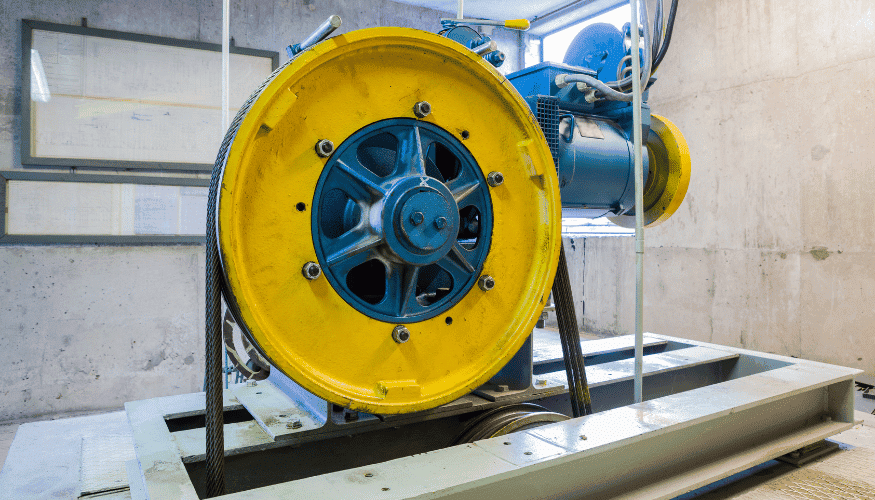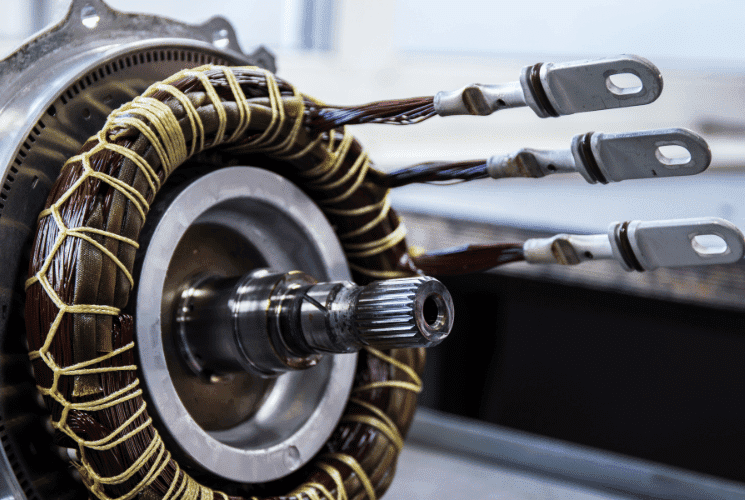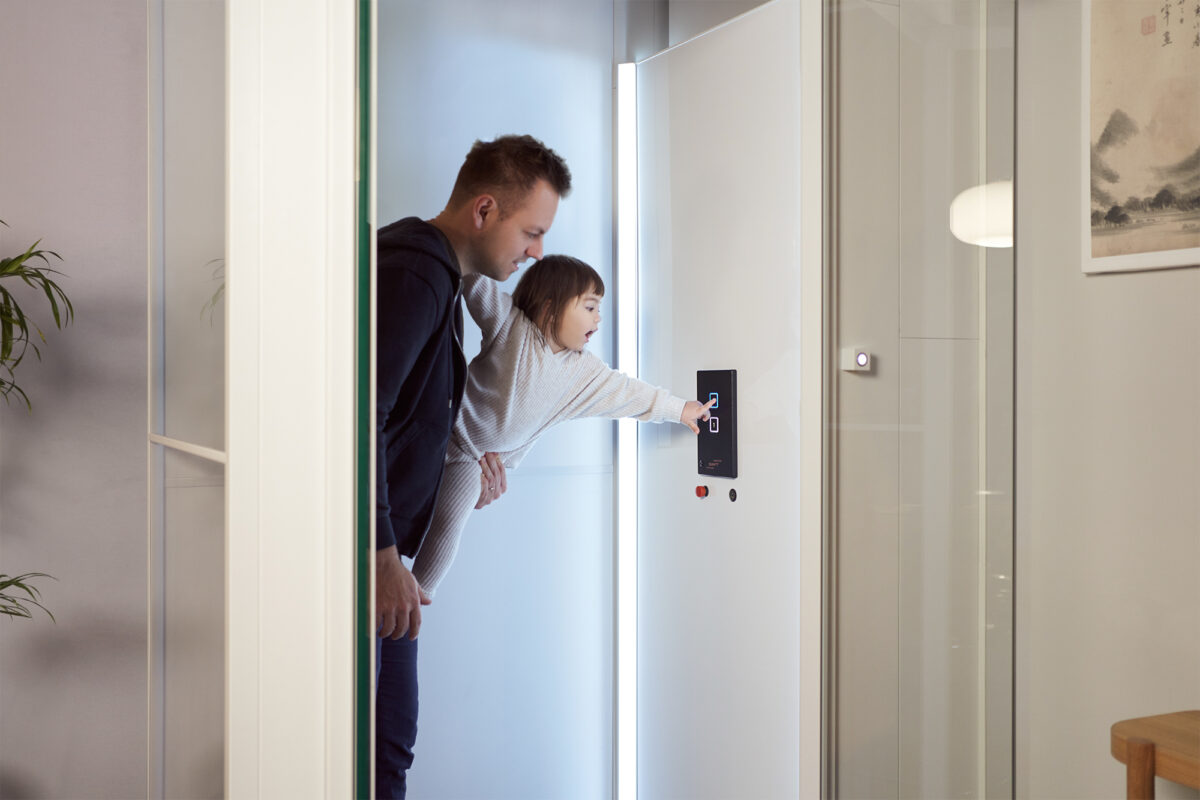
The elevator is an integral part of the system that transports people and goods up and down buildings. This modern convenience is powered by a crucial component: the elevator motor. Style and comfort frequently get to the forefront, but the motor power is the main component of the elevator. By identifying the types of motors a lift has, you can make wise choices when choosing a home elevator installation for your house. This article will look into the different motors that enable residential lifts to move upwards and downwards.
The Crucial Role of Motors in Lifts
The elevator motor converts electrical energy into mechanical energy, which rotates the lift’s drive sheave. This rotation translates into the vertical movement of the lift cabin. Selecting the proper motor ensures optimal performance, safety, and cost-effectiveness for your home lift.
Types of Elevator Motors
There are four main types of motors used in home lifts in India, each with its advantages and limitations:
-
AC Induction Motors
These are the most popular type of lift motors, and they have the pros of high reliability, simple design, and low price. AC induction motors rely on a rotating magnetic field to generate current in the rotor, causing torque to rotate the lift. However, they may be less energy-efficient than some other methods.
-
DC Motors
These motors provide accurate speed control and perfect operation, making them suitable for applications where comfort and quietness are preferable. DC motors generate rotational torque by the effect of the magnetic field set up by direct current on the windings of a motor. Despite their efficiency, DC motors demand higher maintenance levels than AC induction motors.
-
Hybrid AC/DC Motors
These motors provide accurate speed control and perfect operation, making them suitable for applications where comfort and quietness are preferable. DC motors generate rotational torque by the effect of the magnetic field set up by direct current on the windings of a motor. Despite their efficiency, DC motors demand higher maintenance levels than AC induction motors.

-
IPM SynRM Motors
This innovative technology, which SWIFT uses, offers several advantages. IPM SynRM motors utilize permanent magnets in the rotor and a specially designed stator to create a highly efficient motor with smooth operation. These cutting-edge motors offer several advantages:
- High Efficiency: IPM SynRM motors boast superior energy efficiency compared to traditional options, leading to lower energy consumption and operational costs.
- Silent Operation: These motors operate with minimal noise, ensuring a peaceful and quiet ride in your home lift.
- Compact Design: The compact size allows space-saving lift designs, which are ideal for modern home environments.
- Smooth Operation: These motors provide soft starts and stops, providing a comfortable and safe lift experience.
Choosing the Right Motor: Factors to Consider
Selecting the ideal motor for your home lift requires careful consideration of several factors:
- Elevator Size and Capacity: Your lift’s size and weight capacity will significantly influence the motor choice. A lift for a small house can carry 3-4 persons. A larger lift with a higher capacity will require a more powerful motor than a smaller one.
- Travel Speed and Acceleration: Desired travel speed and acceleration rates will affect motor selection. Faster speeds and higher acceleration require a motor with greater power output.
- Lift Height and Number of Floors: The total lift height and number of floors served play a role. Greater vertical distance translates to an increased workload on the motor.
- Duty Cycle and Usage Patterns: Consider how frequently you will use the lift throughout the day. A more robust motor designed for continuous operation might benefit high-usage environments.
Energy-Efficient Model: With growing concerns about energy consumption, choosing an energy-efficient motor like an IPM SynRM motor can significantly reduce your lift’s operating costs.

Consulting with Professionals for Informed Decisions
Motor selection is the most crucial consideration, and it involves a comprehensive investigation of your specific needs and life purpose. Collaboration with experienced professionals on the bupply and demand sides is fundamental for making a proper decision. They would determine your needs, advise you on the best model type based on the parameters discussed here, and provide assistance at every step of lift installation.
Upgrade Your Home with SWIFT Residential Lifts
At SWIFT, we understand the importance of choosing the right technology for your home lift. Our lifts utilize advanced IPM SynRM motors, offering superior energy efficiency, smooth operation, and a compact design. We are certified home lifts suppliers in Delhi and can guide you through the entire process, from initial consultation to choosing the most suitable motor and lift model for your needs.
Contact us today and experience the difference a technologically advanced home lift can make.
FAQs
Absolutely. Energy efficiency translates to lower operating costs for your home lift. IPM SynRM motors, used by SWIFT, are a great option due to their superior energy savings.
Yes. High-rise buildings typically require motors with a higher power rating to handle the increased load and travel distance compared to low-rise applications.
There isn’t a single “best” DC motor type. However, DC motors with high starting torque are well-suited for elevators with frequent starts and stops. Consulting a professional is recommended for a specific recommendation.
The level of noise generated can vary depending on the motor type. SWIFT uses IPM SynRM motors, which are known for their quiet operation compared to traditional options.
Yes. Selecting the proper motor requires expertise. A professional can assess your needs, recommend the most suitable motor type based on various factors, and ensure optimal performance of your home lift.
Get in Touch!










